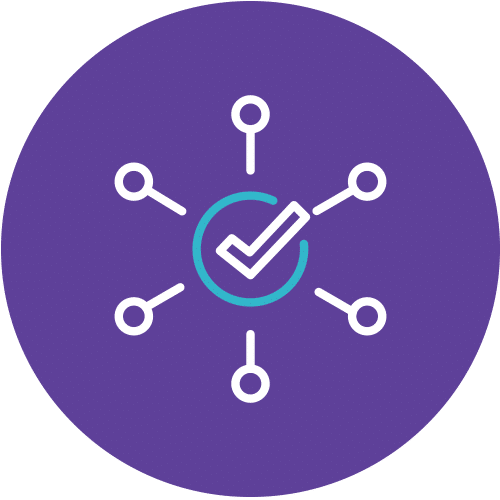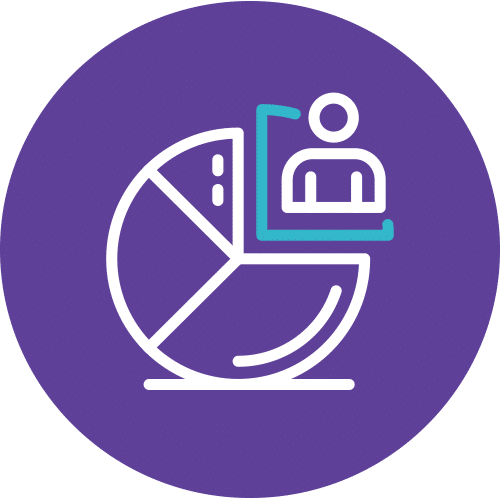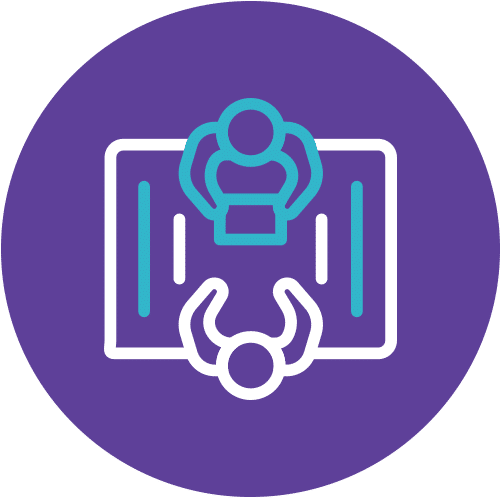Unlocking Success with Microsoft Dynamics 365 Supply Chain Management
Microsoft Dynamics 365 Supply Chain Management is your gateway to mastering the intricacies of supply chain management. In this comprehensive course, you’ll embark on a transformative journey, equipping yourself with the knowledge and skills needed to navigate the dynamic world of supply chain management.
Your Path to Expertise
From creating and managing products to mastering the art of discrete manufacturing, this course leaves no stone unturned. You’ll delve into concepts like commodity pricing and compliance, process manufacturing, and asset management. Each module is a stepping stone towards becoming a Dynamics 365 Supply Chain Management expert. Whether you’re a seasoned professional looking to upskill or an enthusiast ready to explore new horizons, this course caters to you.
Elevate Your Career
As the backbone of every business, supply chain management is the key to operational efficiency. By enrolling in this course, you’re not just gaining knowledge; you’re investing in your future. Become the go-to expert in supply chain management and propel your career to new heights. Join us on this journey, and let’s unlock success together with Microsoft Dynamics 365 Supply Chain Management.
Course Details
Course Code: MB-335T00; Duration: 5 days; Instructor-led
This course is designed to build your in Dynamics 365 Supply Chain Management application knowledge. This course will cover the most important features and functionalities needed by Dynamics 365 Supply Chain Management functional consultant including: The product information and how to configure, create, and manage your product and inventory. Supply chain management configuration and processing. The transportation management features, and the warehouse management features. Asset Management functionalities. Master planning configuration and processing. Sales and procurement processes. This course includes lectures and several hands-on exercises. The exercises will be introduced to you in the form of a case study presented to a Dynamics 365 Supply Chain Management Functional Consultant, Expert. Each exercise will be based on a business scenario followed by a question or discussion then a step-by-step guidance to perform the system related steps.
Audience
Chain Management Functional Consultant Expert is a key resource that implements and configures advanced features of Dynamics 365 Supply Chain Management to meet the requirements of a business. The functional consultant analyzes business requirements, translates those requirements into fully realized business processes and solutions, and applies industry-recommended practices to implementations. The functional consultant has a strong advanced knowledge of supply chain management operations including production, master planning, and asset management and demonstrates expertise in one or more of the following manufacturing methods: discrete, process, and lean. They partner with architects, developers, consultants and other stakeholders to implement solutions that meet or exceed the needs of their customers. The consultant identifies use cases for applying Dynamics 365 Supply Chain Management add-ins for mixed reality, internet of things (IoT), and machine learning (ML) technologies. The functional consultant specializes in one or more of the following feature sets of Dynamics: finance, manufacturing, or supply chain management. They partner with architects, developers, administrators, and other stakeholders to deliver solutions that meet or exceed the needs of their customers.
Prerequisites
–
Methodology
This program will be conducted with interactive lectures, PowerPoint presentation, discussion and practical exercise.
Course Objectives
–
Outlines
Module 1: Create products and product masters in Dynamics 365 Supply Chain Management
Product information is the pillar of supply chain and retail applications across all industries. In the various modules of a business solution, product-specific information and setup are required to manage the business processes that are related to specific products, product families, or product categories.
Lessons
- Introduction
- Product information workspace
- Concept of a product
- Create products
- Set up unit conversions
- Batch disposition codes
- Default order settings
- Define products as not stocked
- Create product masters with variants
- Gain productivity by using the Variant suggestions page
- Create and set up category hierarchies and attributes
- Set up item pricing
- Lab – Create a product and product master
- Check your knowledge
- Summary
After completing this module, students will be able to:
- Create products as type Item and Service.
- Set up product unit conversions.
- Set up transfer orders
- Set up default order settings.
- Create product masters with predefined variants.
- Create and set up category hierarchies.
- Create product attributes.
Module 2: Create bill of materials in Dynamics 365 Supply Chain Management
A bill of materials (BOM) defines the components that are required to produce a product. The components can be raw materials, semi-finished products, or ingredients. In some cases, services can be referenced in a BOM. However, BOMs typically describe the material resources that are required. When combined with a route or production flow that describes the operations and resources that are required to build a product, the BOM forms the foundation for calculating the estimated cost of the product.
Lessons
- Introduction
- Work with the BOM designer
- BOM and formula versions
- BOM line types
- BOM levels
- Exercise – Create a BOM in the BOM Designer
- Check your knowledge
- Summary
After completing this module, students will be able to:
- In this module, you will learn how to create bill of materials and BOM versions by using the BOM designer in Supply Chain Management.
Module 3: Get started with discrete manufacturing in Dynamics 365 Supply Chain Management
If a company only produces several simple products, production can be scheduled manually with the correct bill of materials (BOM) parts arriving on the production floor, at the correct time, and at the proper resource. This module explains what discrete manufacturing is and how it works in Dynamics 365 Supply Chain Management.
Lessons
- Introduction
- Discrete manufacturing life cycle
- Master planning and planned production orders
- Bills of materials
- Working with BOM and item configurations
- Create a bill of materials
- Production orders
- Exercise – Create a simple BOM without a version
- Exercise – Create a BOM in the BOM designer
- Exercise – Create a BOM with a version
- Exercise – Create and process a production order
- Check your knowledge
- Summary
After completing this module, students will be able to:
- Discrete manufacturing concepts
- Production order statuses
- Production stages
- Bill of materials (BOM)
- Resources
- Routes and operations
Module 4: Work with commodity pricing and compliance in Dynamics 365 Supply Chain Management
The fall and rise of prices for commodities such as renewable energy, natural gas, coal, and oil in manufacturing affect the cost of production. In this module, you will learn how to set up commodity pricing and stay in compliance for your finished goods.
Lessons
- Configure commodity pricing
- Configure product compliance
- Exercise – Set up commodity pricing
- Exercise – Set up pricing calculation
- Exercise – Create price data and update agreements
- Exercise – Product compliance
- Check your knowledge
- Summary
After completing this module, students will be able to:
- Configure commodity pricing in Supply Chain Management.
- Configure product compliance in Supply Chain Management.
Module 5: Configure process manufacturing in Dynamics 365 Supply Chain Management
Process manufacturing is associated with formulas and manufacturing recipes, whereas discrete manufacturing uses discrete units and bills of materials. Process manufacturing is used in manufacturing environments where production is completed in batch or semi-continuous processes.
Lessons
- Introduction
- Process manufacturing item types
- Production type setup
- Set up packaging and batch attributes
- Shelf life related setup
- Item model group, product compliance, and approved vendors
- Catch weight
- Transaction adjustments
- Catch weight item handling policy
- Supported scenarios
- Catch weight tags
- Configure approved vendors
- Exercise – Create an approved vendor list
- Exercise – Create and use a partial visibility catch weight item
- Exercise – Use catch weight items
- Check your knowledge
- Summary
After completing this module, students will be able to:
- Configure process manufacturing.
- Create and configure catch weight items.
- Configure approved vendors.
Module 6: Adding Web Animation & Video
Get started with Engineering Change Management for Dynamics 365 Supply Chain Management
Lessons
- Introduction
- Overview of features
- End-to-end walkthrough of features
- Exercise – Set up demo data for the sample scenario
- Exercise – Create a new engineering product
- Exercise – Release an engineering product to a local company
- Exercise – Review and accept the product before you release it in the local company
- Exercise – Use the product in transactions in the local company
- Exercise – Add the engineering product to a sales order
- Exercise – Request changes in the engineering product
- Exercise – Make changes to the product by using an engineering change order
- Exercise – Release the changed product
- Check your knowledge
- Summary
After completing this module, students will be able to:
- Understand the features in engineering change management.
- Learn how the end-to-end engineering change management process works.
Module 7: Set up versioned products in Dynamics 365 Supply Chain Management
Product data is an important part of any company that uses supply chain management processes. With Engineering Change Management for Microsoft Dynamics 365 Supply Chain Management, manufacturers can use strong data management and version control.
Lessons
- Introduction
- Create an engineering organization
- Create nomenclature for product versions
- Create product version number rules
- Create product dimension groups by using the version dimension
- Create product life cycle states
- Engineering attributes
- Product readiness policies
- Product release policies
- Create engineering categories
- Exercise – Create a product readiness policy
- Check your knowledge
- Summary
After completing this module, students will be able to:
- Set up engineering organizations.
- Work with product versioning.
- Create dimension groups by using the version dimensions.
- Create product life cycle states.
- Use engineering categories.
Module 8: Configure engineering change management for Dynamics 365 Supply Chain Management
Some setup is required to use Engineering Change Management for Dynamics 365 Supply Chain Management. The feature must be enabled and severities identified. Also, you need to identify product owners and configure workflows to approve engineering change orders and engineering change requests.
Lessons
- Introduction
- Set up engineering change severities
- Set up severity rule sets
- Set up product owners
- Engineering workflows
- Exercise – Create a severity rule
- Check your knowledge
- Summary
After completing this module, students will be able to:
- Set up engineering change severities and severity rules.
- Set up product owners.
- Use a workflow with engineering change management.
Module 9: Request and follow up with product changes in Dynamics 365 Supply Chain Management
During the life cycle of an engineering product, instances might occur where the product information will need to be updated, removed, or replaced. In this scenario, Engineering Change Management for Dynamics 365 Supply Chain Management provides you with a structured process for making these changes.
Lessons
- Introduction
- Engineering change requests
- Engineering change orders
- Exercise – Create an engineering change request
- Check your knowledge
- Summary
After completing this module, students will be able to:
- Create an engineering change request.
- Learn about business impacts.
- Create an engineering change order.
Module 10: Get started with product configuration in Dynamics 365 Supply Chain Management
Product configuration is a constraint-based product configuration tool that uses the Microsoft Solver Foundation (MSF) product technology that is designed for modeling and constraint solving. You can use product configuration to create and maintain product configuration models and to reuse components and attribute types in Dynamics 365 Supply Chain Management.
Lessons
- Introduction
- Overview
- Elements of a product configuration model
- Expression constraints and table constraints in product configuration models
- Validate and test a product configuration model
- Finalize a model for configuration
- Set up a product configuration model
- Calculations for product configuration models
- Solver strategy for product configuration
- Reuse product configurations
- Release a product configuration model
- Customize a product configuration model
- Exercise – Build and use a product configuration model
- Check your knowledge
- Summary
After completing this module, students will be able to:
- Important terminology to help you understand the concepts and processes that are associated with product configuration.
- Product configuration end-to-end scenario.
- Different areas that span the product configuration process.
- The product configuration model.
- How to build a product configuration model.
Module 11: Work with the costing sheet in Dynamics 365 Supply Chain Management
Manufacturing companies need to calculate the costs that are related to finished goods that are being produced such as labor, materials, surcharges, and overheads. You can configure Dynamics 365 Supply Chain Management to calculate costs of bill of materials of the finished goods in production. Additionally, you can create costing sheets that are broken out by particular cost categories, incorporate routing costs, and even add surcharges and other indirect costs. Companies can then analyze, summarize, and evaluate cost data so they can make the best possible decisions for price updates, budgets, cost control, and so on.
Lessons
- Introduction
- Costing versions
- Cost groups
- Calculation groups
- Costing sheets
- BOM calculations
- BOM Measurements
- BOM Reports
- Lab – Analyze BOM costs by using the costing sheet
- Check your knowledge
- Summary
After completing this module, students will be able to:
- Configure the costing sheet.
- Perform BOM calculation and analyze costs by using the costing sheet.
Module12: Configure formulas for process manufacturing in Dynamics 365 Supply Chain Management
In process manufacturing in Dynamics 365 Supply Chain Management, a formula defines the materials, ingredients, and outcomes of a specific process.
Lessons
- Introduction
- Formulas, formula lines, and formula versions
- Formula features
- Approve and activate formulas and formula versions
- Use step consumption
- Coproducts
- By-products
- Burden allocation
- Planning items
- Exercise – Create co-products and by-products
- Exercise – Create a new formula with a version from the Released products page
- Exercise – Copy and modify formula versions
- Exercise – Create and update a scalable formula
- Exercise – Create a percentage-based formula
- Exercise – Create a step consumption formula
- Check your knowledge
- Summary
After completing this module, students will be able to:
- Manage formulas.
- Create co-products and by-products.
Module 13: Get started with production control in Dynamics 365 Supply Chain Management
The life cycle of production begins with the creation of the production order, batch order, or kanban. It ends with a finished, manufactured item that is ready for either a customer or another phase of production. Each step in the life cycle requires different kinds of information to complete the process. As each step is completed, the production order, batch order, or kanban shows a change in the production status. Different types of products require different manufacturing processes.
Lessons
- Discrete, lean, and process manufacturing methodologies
- Unified manufacturing
- How to configure production control for unified manufacturing
- Capacity planning
- Integration between the General ledger and the Production control modules
- Production pools
- How to work with allocation keys
- IoT intelligence and insights in Supply Chain Management
After completing this module, students will be able to:
- Introduction
- Core concepts in production control
- Understand unified manufacturing
- Manufacturing principles
- Overview of the production process and production life cycle
- Discrete manufacturing
- Process manufacturing
- Lean manufacturing
- Configure production control for unified manufacturing
- Capacity planning
- Integration between the General ledger and the Production control modules
- IoT intelligence and insights
- Lab – Explore production control
- Check your knowledge
- Summary
Module 14: Use warehouse management for manufacturing in Dynamics 365 Supply Chain Management
Do you want to get the best out of warehouse management to support your manufacturing activities? In this module, you can learn about the manufacturing-specific warehouse management features in Dynamics 365 Supply Chain Management.
Lessons
- Production input location
- Production output location
- Staging and order picking
- Release BOM and formula lines to the warehouse
- Cross-docking
- Planned cross docking
- Visibility into material exceptions
- Lab – Work with warehouse management in manufacturing
- Check your knowledge
- Summary
After completing this module, students will be able to:
- Production input and output locations.
- Staging and order picking.
- Releasing BOM and formula lines to the warehouse.
- Cross-docking.
- Visibility into material exceptions.
Module 15: Work with manufacturing execution in Dynamics 365 Supply Chain Management
The Manufacturing execution module is intended primarily for manufacturing companies. It can be used to register time and item consumption on production jobs or projects. Before you start to use manufacturing execution for job registrations, you must set up various production parameters that define how and when registrations are posted during the production process. The settings of production parameters affect inventory management, production management, and cost calculation.
Lessons
- Introduction
- Understand the manufacturing executions
- Identify roles in manufacturing execution
- Planning consideration for manufacturing execution
- Configure manufacturing execution
- Control production with manufacturing execution
- Report as finished from the job card device
- Lab – Manufacturing execution
- Check your knowledge
- Summary
After completing this module, students will be able to:
- Learn about the manufacturing execution process.
- Identify the roles in manufacturing execution.
- Process production orders.
- Discover the process workflows to manage a production.
Module 16: Get started with Asset Management for Dynamics 365 Supply Chain Management
Asset Management is a module for managing assets and maintenance jobs in Dynamics 365 Supply Chain Management. Asset Management enables you to efficiently manage and carry out tasks related to managing and servicing many types of equipment in your company, for example, machines, production equipment, and vehicles. Asset Management supports solutions across numerous industries.
Lessons
- Overview and benefits
- Asset Management terminology and concepts
- Functional locations and assets
- Assets and work orders
- Install the Asset Management mobile workspace
- Use the Asset Management mobile workspace
- Asset Management integration capabilities
- Integrate Asset Management with Dynamics 365 Guides
- Check your knowledge
- Summary
After completing this module, students will be able to:
- Review the benefits of Asset Management.
- Define the key terms and concepts in Asset Management.
- Learn how to install, and work with the Asset Management mobile workspace.
- Review Asset Management integration capabilities.
Module 17: Schedule work orders in Asset Management for Dynamics 365 Supply Chain Management
Schedules for maintenance workers, assets and other tools are created when work orders are scheduled in Asset Management for Dynamics 365 Supply Chain Management.
Lessons
- Introduction
- Configure workers for work order scheduling
- Schedule and dispatch work orders
- Calculate capacity load on scheduled work orders
- Lab – Set up a preferred worker, and schedule a work order
- Check your knowledge
- Summary
After completing this module, students will be able to:
- Create worker calendars and scheduling.
- Identify and assign preferred maintenance workers.
- Schedule and dispatch work orders, including scheduling for a specific date and time.
- Review the scheduled work order maintenance jobs to assign resources to maintenance jobs.
- Learn how to calculate a capacity load on scheduled work orders by defined periods.
Module 18: Configure and perform the procure-to-purchase process in Dynamics 365 Supply Chain Management
Procure-to-purchase is the first step of the procure-to-pay process. Procure-to-purchase involves the procurement agent finding a vendor and requesting a material or service to be purchased.
Lessons
- Introduction
- Procurement scenario
- Overview of the procure-to-purchase process
- Set up procurement categories
- Use procurement catalogs
- Create a purchase requisition
- Create and process a request for quotation
- Create purchase orders
- Vendor categories and catalogs
- Evaluate a vendor and put a vendor on hold
- Use purchasing policies
- Lab – Work with procure-to-purchase processes
- Check your knowledge
- Summary
After completing this module, students will be able to:
- Apply the procurement and sourcing processes in a business scenario.
- Use purchasing policies.
- Create and maintain vendors.
- Create and process purchase requisitions.
- Create and process a request for quotation.
Module 19: Configure activity-based subcontracting and production flow costing in Dynamics 365 Supply Chain Management
The subcontracting functionality in Dynamics 365 Supply Chain Management offers visibility of the components that are provided to the subcontractor and also, if necessary, capacity visibility at the subcontractor. Additionally, working with kanban planning and process boards allows companies to make quick, informed decisions to effectively manage demand variations, especially when they are analyzing the production flow costing in lean manufacturing.
Lessons
- Overview of subcontracting and production flow costing
- Subcontracting capabilities
- Subcontracting a vendor
- Subcontracting service
- Transfer activities as subcontracting activities
- Subcontracting as an alternate resource
- Cost accounting of subcontracted services
- Subcontracting cost flow
- Backflush costing
- Products and material in Work in Progress
- Standard cost
- Costing lean manufacturing
- Calculation of standard cost
- Calculate unused quantities
- Calculation of production variances to standard cost
- Ledger entries created from processing a production flow
- Exercise – Set up a default vendor and create a purchase agreement
- Exercise – Create a work cell for subcontracting
- Exercise – Create an activity-based subcontracting rule
- Exercise – Create and schedule kanbans for subcontracting
- Exercise – Process and transfer jobs
- Check your knowledge
- Summary
After completing this module, students will be able to:
- Configure activity-based subcontracting.
- Designate vendors as subcontractors.
- Configure production flow costing.
Module 20: Configure and use agreements in Dynamics 365 Supply Chain Management
Companies negotiate and agree on certain terms to fix the price of items. These agreements help businesses make correct estimations of cost of goods purchased and set a base for sales prices. By purchasing or selling goods, companies might be entitled to receive rebates or gain royalty rewards, which can be converted to a credit note.
Lessons
- Introduction
- Work with trade agreements
- Create sales agreements
- Create purchase agreements
- Configure trade allowance management
- Configure brokerage contract management
- Configure royalty contract management
- Configure vendor rebates
- Rebate management module
- Exercise – Create a purchase agreement
- Exercise – Generate and process customer rebates
- Exercise – Create trade agreements
- Check your knowledge
- Summary
After completing this module, students will be able to:
- Maintain trade agreements.
- Configure smart rounding.
- Create sales agreements.
- Use procurement policies.
- Create purchase agreements.
- Configure trade allowance.
- Configure brokerage.
- Configure royalties.
- Configure rebates.
- Learn about the Rebate management module.
Module 21: Work with capacity planning and scheduling in Dynamics 365 Supply Chain Management
The role of the scheduling system in Dynamics 365 Supply Chain Management is to plan the production process so that each operation in the production route is assigned a starting and ending date and time, and that the materials needed for production are available when the operation starts.
Lessons
- Introduction
- Scheduling options
- Split a production order
- Operations scheduling
- Job scheduling
- Scheduling options from the Gantt chart
- Resource scheduling
- Scrap and waste
- Exercise – Start a discrete production order
- Exercise – Run a resource schedule
- Check your knowledge
- Summary
After completing this module, students will be able to:
- Work with capacity planning.
- Schedule a production order.
- Split a production order.
- Set up scrap and waste.
Module 22: Configure and use built-in master planning in Dynamics 365 Supply Chain Management
Businesses in any market, such as retail, manufacturing, distribution, services, and public sector organizations, need functionality to help them plan for demand and supply of products and services during short or long-term operations. Get to know the Master planning feature of Dynamics 365 Supply Chain Management to streamline your planning, based on predetermined factors, to efficiently plan what materials need to be purchased, transferred, or manufactured.
Lessons
- Introduction
- Master planning considerations and setup
- Master planning parameters page
- Create a master plan
- Demand forecasting
- Coverage settings
- Action messages
- Configure intercompany planning
- Run plans and firm planned orders
- Set up and use the Supply schedule page
- Exercise – Firm a planned order
- Exercise – Change a planned order type
- Exercise – Create and run an intercompany master plan
- Check your knowledge
- Summary
After completing this module, students will be able to:
- Set up and configure master planning.
- Use the Supply schedule page.
- Set up demand and supply forecasts.
- Configure calculated delays.
- Configure intercompany master planning.
- Run plans and firm planned orders.
Module 23: Use Planning Optimization in Dynamics 365 Supply Chain Management
The Planning Optimization Add-in enables the calculation of a master plan to occur outside Dynamics 365 Supply Chain Management and its SQL database. Planning Optimization improves performance and has minimal impact on the SQL database during the planning runs. Therefore, it can be run during normal office hours and provide immediate results based on the most recent activity.
Lessons
- Introduction
- Install the Planning Optimization Add-in
- Integration and fit analysis
- Apply filters to a plan
- Master planning with demand forecasts
- Planning optimization support for capability-based resource allocation
- Priority-based planning
- Master planning and purchase trade agreements
- Safety margins
- Coverage time fences
- Approved planned orders
- Generate planned production orders
- Analyze and approve planned orders
- Auto-firming
- Planning with negative on-hand quantities
- View history and planning logs
- Cancel a planning job
- Exercise – Set up purchase trade agreements for Planning Optimization
- Exercise – Approve a planned order
- Check your knowledge
- Summary
After completing this module, students will be able to:
- Review the architecture of the Planning Optimization Add-in.
- Identify the benefits of using Planning Optimization.
- Discover the performance improvements within Planning Optimization.
- Learn about priority-based planning
Module 24: Create and process fixed kanbans in Dynamics 365 Supply Chain Management
The Kanban schedule board lets the production planner control and optimize the production plan for kanban jobs. It makes the flow of kanban jobs transparent and gives the production planner a tool that optimizes and adjusts the production plan for the lean manufacturing work cell. Kanban rules in Dynamics 365 Supply Chain Management are tied to production flows as the foundation that defines the activities of a kanban. Kanban rules can be set up to support a variety of make-to-stock and make-to-order scenarios. This module explains how to work with Kanban schedule boards and describes kanban types, kanban replenishment strategies, and fixed quantity kanban rules.
Lessons
- Introduction
- Understand kanban boards
- Configure a fixed kanban rule
- Process a fixed kanban
- Kanban quantity calculations and circulating kanbans
- Exercise – Configure a fixed quantity kanban rule
- Exercise – Fixed kanban job processing
- Check your knowledge
- Summary
After completing this module, students will be able to:
- Kanban rules.
- Manufacturing kanbans.
- Withdrawal kanbans.
- Fixed quantity kanbans.
- Kanban quantity calculations and circulating kanbans.
Module 25: Identify and configure batch attributes for process manufacturing in Dynamics 365 Supply Chain Management
Often, customers demand specific requirements for the finished goods results from process manufacturing. For example, in the cheese industry, milk is one of the raw materials that is used to produce the cheese and it can have attributes such as fat content and percentage weight. The cheese that is produced from the milk can have other attributes, such as moisture and age. If the customer requirement is not met, you will either have to rework the process or start a new batch process. To ensure that process manufacturers meet customer demands, you must define batch attributes that reflect customer requirements. Additionally, after a quality check, the finished goods must meet the value or range of values from batch attributes.
Lessons
- Batch attributes
- Assign and reserve batch attributes
- Products that have an active ingredient
- Ingredient types
- The batch balancing process
- Exercise – Create and assign batch attributes
- Exercise – Record batch attributes at batch creation
- Exercise – Record batch attribute values by using quality orders
- Exercise – Reserve batch attributes on sales orders
- Check your knowledge
- Summary
After completing this module, students will be able to:
- Batch attributes.
- Batch balancing process.
- Potency management.










